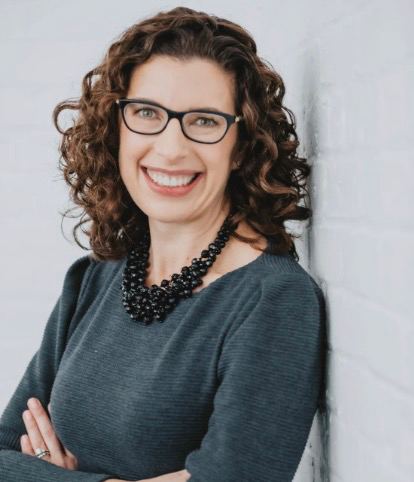As of January 1, in the two states where I practice medicine — Rhode Island and Connecticut — it is legal for pharmacists to prescribe oral contraceptive pills (OCPs, more commonly known as birth control pills). Twenty-seven other states, plus the District of Columbia, have similarly permissive laws.
I’m cheering.
That may sound strange: Aren’t most doctors opposed to pharmacists writing prescriptions? And besides, a birth control pill has already been approved to be available over the counter — so why care about prescriptions?
This is where my public health training comes in. It’s about balancing risk and benefit. It is true that many medications should only be prescribed in a doctor’s office, after a thorough physical exam, medical history and even lab tests. But oral contraceptives are not among them. The benefit for the patient is clearly on the side of expanded prescription authority for pharmacists.
OCPs are tremendously safe — so safe, in fact, that in most countries they are available without a prescription. The risk of health harm from an unwanted pregnancy is far higher than the risk of a side effect from an OCP for most women. Moreover, in most US states that permit pharmacist prescribing of OCPs, the laws require a screening questionnaire to identify those few women for whom risk may outweigh benefit (for example, for women with a strong family history of blood clots, high blood pressure, or some cancers).
Yes, the O-pill will soon be available over the counter in the US, but it is progestin-only. The most popular birth control pills, though, are a combination of estrogen and progestin. They are better at decreasing women’s menstrual pain and heavy bleeding, and may be slightly more effective at preventing pregnancy than the progestin-only pill — but also have a few more side effects, so they remain available only with a prescription.
For those who do need a prescription, a highly-trained pharmacist is far easier to find than a medical doctor: According to a study from the Journal of the American Pharmacists Association (JAPHA), nearly 50% of the US population lives within a mile of a pharmacy, and over 95% of us live within 10 miles of a pharmacy. Meanwhile, access to primary care physicians is at an all-time low, with one recent report from the National Association of Community Health Centers noting that nearly one-third of us lack a primary care doctor.
Pharmacist-prescribing capability for this low-risk medication matters, particularly as the women who are at highest risk of unplanned pregnancy are also least likely to be able to get to a doctor, according to research done before the Dobbs decision. The importance of pharmacists prescribing for OCPs goes beyond ease of access, though. It’s also about cost.
Many women will be unable to afford the out-of-pocket cost of a non-prescribed medication. By getting a prescription from a pharmacist, insurance coverage will apply. This detail is particularly important for those women who have the highest risk of maternal and infant mortality, such as those with low incomes.
As we face a crisis of maternal mortality, and knowing that unplanned pregnancies, are associated with higher rates of complications, anything that makes it easier to control one’s reproductive choice matters. As Dr. Dara Kass, an emergency physician and recent director of Region 2 of Health and Human Services explained to me, “This expanded access allows people to be intentional about when and how they get pregnant — which we know contributes to safer and healthier pregnancies.”
And actually — from a public health perspective — OCPs are not the only medication that can and should be prescribed without a doctor’s or other clinician’s exam.
Nirmatrelvir and ritonavir (more commonly known as Paxlovid), for example, should be able to be universally prescribed by pharmacists, for any patient with a positive Covid-19 test, after a brief run-down of medical conditions that would support or preclude its use. For this medication, time is of the essence for our highest-risk patients. Pharmacists know better than many physicians about the drug-drug interactions that may make Paxlovid inappropriate for some patients — and are often more up-to-date on how to mitigate this concern. According to Kerry LaPlante PharmD, Dean of the College of Pharmacy at the University of Rhode Island, “Pharmacists are arguably one of the most underutilized member of the health care system.”
One could imagine this model applied to other easily diagnosed diseases (like strep throat) whose treatment has clear indications, high benefit and limited, easily identifiable reasons to not take a medication. It’s true that dispensing pharmacists are not trained in the full spectrum of clinical medicine (as they have not completed a residency). But for a limited group of time-sensitive, low-risk medications, why not expand access to treatment?
My enthusiasm aside, I do have some cautions.
Pharmacists are a great and important part of the health care system, but they can’t fully make up for, say, lack of a local emergency department or lack of access to obstetricians. The list of problems with our “sick care” system is long, but at a minimum, we need to provide adequate trauma and maternity care in rural hospitals, systematically address the crisis in the availability of hospital beds for admitted emergency department patients across the US, and stop dismantling the very systems that keep people healthy.
Pharmacists in the retail environment are also already overwhelmed and burned out (just like everyone else in the health system). And as LaPlante reminded me, adding on more responsibility may create a new set of problems: “High-quality engagement with patients takes time, but pharmacists can’t currently bill for that.” It would be a mistake to expand prescribing capability without also ensuring that pharmacists have time and appropriate reimbursement to counsel about side effects and risk.
Pharmacists’ ability to prescribe OCPs (and other medications) also does not mitigate continued concern about limitations on access to reproductive health care across the country. Allowing pharmacists to prescribe a medication means nothing if the pharmacy isn’t stocking that drug, or if patients don’t know that they can ask for it.
Most of all, pharmacist prescribing does not fix the current travesty of prescription drug pricing and out-of-pocket medication costs for many Americans. (The Inflation Reduction Act is a small but important step in the right direction for older Americans.)
At the end of the day, pharmacist prescribing of OCPs is terrific and much needed. But it’s only part of the solution to reduce unplanned pregnancy, to improve women’s health outcomes, and to improve access to the highest quality health care.




